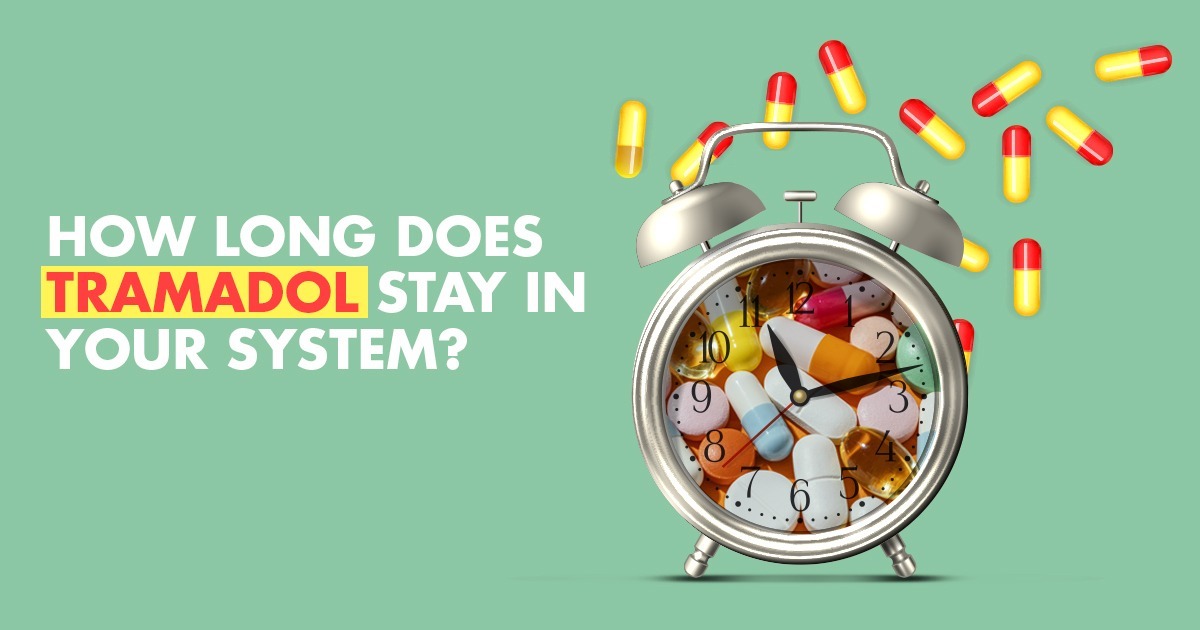
How long does tramadol stay in your system? People have a common question about this prescription drug, which is also available under the brand name Ultram. Below, we discuss how tramadol works, the warnings, and how long it can stay in your system.
An Overview of Tramadol
A prescription drug, tramadol, is available in an immediate and extended-release oral version. When you take the immediate-release form of the medicine, it releases into the body right away. An extended-release tablet will go into your system slowly over some time.
- Tramadol is available as a prescription for moderate to severe pain.
- The drug classification is an opioid agonist or an opioid analgesic.
- A class of drugs is one where all the medications included in the group act similarly and are often treatment options for similar conditions.
When you take tramadol, it changes your brain’s sensing and response to pain.
- The medication is similar to something in your brain called endorphins.
- Endorphins are naturally occurring substances that bind to receptors.
- As part of this binding, the receptors reduce pain messages from your body to your brain.
- Essentially, tramadol works to lower the amount of pain your brain thinks you’re experiencing.
With tramadol’s initial approval in 1995, it wasn’t classified as an opioid, despite acting similarly.
- There were growing cases of addiction and abuse associated with tramadol.
- In 2014, as a result, the Food and Drug Administration (FDA) decided to make tramadol a controlled substance.
- A controlled substance has accepted medical uses, but it is also highly regulated because of its potential abuse or addiction.
Among opioids, tramadol is among the safer ones but still has risks.
- Tramadol is a schedule IV drug, meaning relative to other controlled substances.
- OxyContin, on the other hand, which is a prescription opioid, is a schedule II drug.
- Schedule II drugs have high abuse potential, despite their medical uses.
Tramadol is for the treatment of conditions causing chronic pain like osteoarthritis or pain after surgery.
- Along with binding to opioid receptors to block pain signals, tramadol works in other ways.
- Tramadol increases levels of serotonin and norepinephrine in the brain.
- Both are chemical messengers or neurotransmitters playing a role in your perception of pain.
- Tramadol doesn’t cure pain or treat the underlying cause, but it can help improve functionality in your daily life.
Tramadol Side Effects
Some of the relatively common side effects of tramadol include:
- Depressed mood
- Dizziness
- Constipation
- Sedation
- Fatigue
- Dry mouth
- Headache
- Itching
- Irritability
- Nausea
- Vomiting
- Weakness
- Sweating
More severe side effects requiring medical attention can include:
- Slow or shallow breathing
- Changes in blood pressure
- Risk of serotonin syndrome
- Low levels of androgen, which are male hormones
- Seizures
- Adrenal insufficiency
- Suicidal thoughts
- Overdose
- Tramadol addiction
- Potential for dependence
As we mentioned, as an opioid medication, tramadol can be habit-forming. If your form a physical dependence after taking it for some time, you may have symptoms of tramadol withdrawal if you try to stop suddenly, also known as cold turkey.
Tramadol can have drug interactions, so you should tell a medical professional everything else you take. You shouldn’t combine tramadol with alcohol or other sedatives, or any other opioid drug, because doing so can increase your risk of side effects and overdose.

How Long Does Tramadol Stay in Your System?
If you take tramadol for pain, it should begin working within about an hour after an immediate-release dose. The effects and pain-relieving benefits usually peak in two to four hours. The extended-relief versions will gradually release the medication into your system over a longer time.
- The tramadol half-life is anywhere from five to nine hours.
- Half-life is a measure of how long it takes your body to eliminate half a dose of the drug.
- Complete elimination can take anywhere from five to six times as long as the half-life.
- That could mean it could take up to 54 hours for tramadol to leave your system.
Your liver breaks tramadol down, and your kidneys get rid of it via your urine; around 30% of the dose you take stays in its original form. Your body converts the rest to metabolites, which you then excrete.
Different drug tests for tramadol have a varying amount of time the drug is detectable in your system.
Blood Tests
Blood samples can detect tramadol reasonably quickly after you use it, and it may show up for up to 48 hours after the last time you take it.
Urine Tests
In urine, tramadol has a detection window of up to four hours.
Saliva Tests
After taking tramadol, the detection time could be 24 hours to up to 48 hours after your last use if you undergo a saliva test.
Hair Tests
Hair follicles can detect tramadol up to 90 days after your last use.
Factors Affecting How Long Tramadol Stays in Your System
While the above are estimates, individual factors play a role in how long tramadol stays in your system in drug screenings.
Older people metabolize substances more slowly, often because of impaired organ function, including kidney function and liver function. Body composition and underlying medical conditions affect how long it takes your body to process any drug, including tramadol.
Larger doses take longer to clear from the body. The more often you use tramadol, the longer it will take to metabolize because it accumulates in your body.
If you have a slower metabolic rate, it can take longer for tramadol or any drug to clear your system.
What Are the Side Effects of Stopping Tramadol Suddenly?
You shouldn’t stop taking tramadol suddenly without talking to a health care professional first; if you stop short or cold turkey, you may experience withdrawal symptoms if you’re physically dependent.
Opioid withdrawal side effects include two general phases—early and late. Early withdrawal starts as the drug leaves your bloodstream after your last dose of tramadol. Late withdrawal usually comes a few days after. Signs of early withdrawal from an opioid can include:
- Muscle aches and muscle pain
- Tearing up
- Sweating
- Runny nose
- Yawning
- Sleep disturbances and insomnia
- Anxiety
- Agitation
- Restlessness
- Hypertension
- Racing heart rate
- Fast breathing
Later unpleasant withdrawal symptoms can include:
- Chills/goosebumps
- Stomach pain and cramps
- Nausea
- Vomiting
- Diarrhea
- Loss of appetite
- Brain fog or trouble concentrating
- Cravings
- Irritability
- Depression
- Depersonalization
Opioid withdrawal symptoms will usually start within 12 hours after the last dose. According to the DEA, around 90% of people going through tramadol withdrawal have symptoms in line with traditional opioid withdrawal. Approximately 10% will have more severe long-term symptoms such as extreme paranoia, anxiety, and panic.
If you’re struggling with tramadol or any other opioid, please call 866-600-7709 and contact the compassionate treatment team at Anchored Tides Recovery to learn about options for treatment.




























